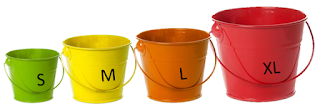Scrum Framework ( Scrum Methods)
Scrum Framework
A Scrum project involves a collaborative effort to create a new product, service, or another result as defined in the Project Vision Statement. Projects are impacted by constraints of time, cost, scope, quality, resources, organizational capabilities, and other limitations that make them difficult to plan, execute, manage, and ultimately succeed. However, successful implementation of the results of a finished project provides significant business benefits to an organization. It is therefore important for organizations to select and practice an appropriate project management methodology.

Scrum is a framework rather than a methodology. It provides clarity of responsibilities through roles, visibility through artifacts, and opportunities for inspection and adaptation through its events. Within this structure, scrum is a container for other processes and tools that are appropriate for meeting the specific needs of a team, organization or product.
Basically, a scrum project has a scrum role, scrum ceremonies and artifacts in project framework:
· scrum roles
· scrum ceremonies
· scrum artifacts
Each of these framework elements fits within the scrum process, which is iterative and incremental. You will incrementally create and improve your product, and you will incrementally improve your process with this basic framework. As you can see, the framework is incredibly simple:
Roles:
· Product owner
· Development team
· Scrum master
Artifacts:
· Product backlog
· Sprint backlog
· Sprint burndown chart
Events:
· Sprint
· Sprint planning
· Daily scrum
· Sprint review
· Sprint retrospective
In the scrum world, artifacts refer to either lists of the work to be done or a work product that has been done and is deemed “shippable.” Unlike archeological artifacts, the scrum artifacts aren’t set in stone. Rather, the scrum process requires a constant review and assessment of artifacts to make sure that you’re digging in the right direction.
In concept, scrum is simple. In practice, scrum can be complicated to implement. It’s much like getting into shape physically. In concept, you need to exercise more and take in fewer calories. However, it can be more complex in practice.
To help in this process of application, some common practices to complement scrum are recommended. There has been incredible success with this model


Comments
Post a Comment